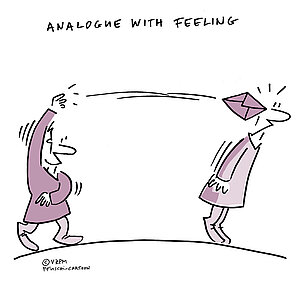Personal communication
Definition
Personal communication includes the exchange of proper information, delivered accurately and consistently to all relevant parties.
Purpose
The purpose of this competence element is to enable the individual to communicate efficiently and effectively in a variety of situations, to different audiences and across different cultures.
Description
Personal communication describes the essential aspects of effective communication. Both the content and the means of communication (tone of voice, channel and amount of information) have to be clear and appropriate for the target audience. The individual has to verify the understanding of messages by actively listening to the target audience and seeking feedback. The individual promotes open and sincere communication and is able to use various means for communication (e.g. presentations, meetings, written forms, etc) and acknowledge their value and limitations.
Key competence indicators
Provide clear and structured information to others and verify their understanding
To give clear information means to structure and translate information in such a way that the receiver can understand and use it. The individual must utilise a logical and structured way of communicating in order to verify understanding. The individual must obtain confirmation that the receiver of information has understood the message as intended. That means focusing on the receiver, not on the information itself, and asking for validation when needed.
Measures
- Structures information logically depending on the audience and the situation
- Considers using story-telling when appropriate
- Uses language that is easy to understand
- Leverages public speaking and presentations
- Coaches and gives training
- Leads and facilitates meetings
- Uses visualisation, body language and intonation to support and emphasise messages
Facilitate and promote open communication
To facilitate and promote open communication means actively inviting others to give their input and opinions on relevant topics. This requires an atmosphere of confidence, so that people can express their ideas and opinions without being rebuffed, punished or ridiculed. It should be made clear when and how others are free and/or invited to propose ideas, emotions and/or opinions, and when the time is less appropriate. In the latter situations, people and their input should still be treated with respect.
To listen and give feedback is to seize opportunities for the exploration and exchange of opinions. The individual has a genuine interest in others’ views and creates open and informal frameworks for feedback. The individual makes people feel that they and their opinions are valued.
Measures
- Creates an open and respectful atmosphere
- Listens actively and patiently by confirming what has been heard, re-stating or paraphrasing the speaker’s own words and confirming understanding
- Does not interrupt or start talking while others are talking
- Is open and shows true interest in new ideas
- Confirms message/information is understood or, when needed, asks for clarification, examples and/or details
- Makes clear when, where and how ideas, emotions and opinions are welcome
- Makes clear how ideas and opinions will be treated
Choose communication styles and channels to meet the needs of the audience, situation and management level
The individual chooses the appropriate way of communicating for the target audience. The individual is able to communicate on different levels and through different channels. Formal or informal, neutral or emotional communication should all be considered, as well as whether written, oral or visual communication is most appropriate.
Measures
- Selects appropriate communication channels and style depending on the target audience
- Communicates via selected channels according to the selected style
- Monitors and controls communication
- Changes the communication channels and style depending on the situation
Communicate effectively with virtual teams
A virtual team consists of individuals who work across time zones, space and/or organisational boundaries. Communication within virtual teams is a challenge, as not all are located in the same environment and/or organisation and they may be distributed over several organisations, cities, countries or continents.
Communication between virtual team members is often asynchronous and not face-to-face, and has to use modern communication technology. The communication procedures have to consider aspects such as language, channel, content and time zones.
Measures
- Uses modern communication technology, (e.g. webinars, tele-conferences, chat, cloud computing)
- Defines and maintains clear communication processes and procedures
- Promotes cohesion and team building
Employ humour and sense of perspective when appropriate
Work in projects can often be stressful. Being capable of viewing situations, problems and even your own work from different viewpoints is an important asset. Humour enables individuals to acquire a sense of perspective – a way of judging how good, bad or important something is compared with other things. The release of tension through humour often facilitates cooperation and decision-making. Humour is a powerful tool to decrease tension in situations where conflicts threaten to arise. Provided it is used in the right way, at the right time and with respect, humour can also facilitate communication.
Measures
- Changes communication perspectives
- Decreases tension by use of humour


